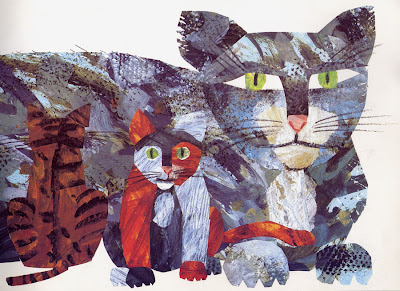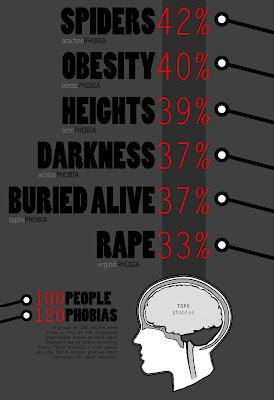TYPOGRAPHY
1000 words on history:
Bodoni is a series of serif typefaces first designed by Giambattista Bodoni (1740–1813) in 1798. The typeface is classified as didone modern. Bodoni followed the ideas of John Baskerville, as found in the printing type Baskerville, that of increased stroke contrast and a more vertical, slightly condensed, upper case, but taking them to a more extreme conclusion. Bodoni had a long career and his designs evolved and differed, ending with a typeface of narrower underlying structure with flat, unbracketed serifs, extreme contrast between thick and thin strokes, and an overall geometric construction. Though these later designs are rightfully called "modern", the earlier designs are "transitional". Among digital versions, there are two good examples of the earlier, transitional period: Sumner Stone's ITC Bodoni, and Günther Lange's "Bodoni Old Face" for Berthold. Virtually all other versions are based on Bodoni's most extreme late manner.
Bodoni admired the work of John Baskerville and studied in detail the designs of French type founders Pierre Simon Fournier and Firmin Didot. Although he drew inspiration from the work of these designers,[citation needed] above all from Didot, no doubt Bodoni found his own style for his typefaces, which deservedly gained worldwide acceptance among printers.
Some digital versions of Bodoni are said to suffer from a particular kind of legibility degradation known as "dazzle" caused by the alternating thick and thin strokes, particularly from the thin strokes being very thin at small point sizes. This only occurs when display versions are used at text sizes, and it is also true of much display type that is used at text sizes. Non-dazzling versions of Bodoni that are intended to be used at text size are "Bodoni Old Face", optimized for 9 points, and ITC Bodoni 12 (for 12 points) and ITC Bodoni 7 (for 7 points).
There have been many revivals of the Bodoni typeface; ATF Bodoni and Bauer Bodoni are two of the more successful. ATF Bodoni was drawn by Morris Fuller Bentonin 1907, and released by American Type Founders. The Bauer version was drawn by Heinrich Jost in 1926. The Bauer version emphasizes the extreme contrast between hairline and main stroke. ATF captured the flavor of Bodoni’s original while emphasizing legibility rather than trying to push against the limits of printing technology. Other revivals include Bodoni Antiqua, Bodoni Old Face, ITC Bodoni Seventy Two, ITC Bodoni Six, ITC Bodoni Twelve, Bodoni MT, LTC Bodoni 175, WTC Our Bodoni, Bodoni EF, Bodoni Classico, and TS Bodoni. Zuzana Licko's Filosofia is considered by some to be a revival of Bodoni, but it is a highly personal, stylish, and stylized spinoff, rather than a revival. Although intended to be usable at text sizes, it represents the early period of the designer's career when interletter spacing was yet to be conquered, so has found use primarily in advertising.
Digital Bodonis typically suffer from a particular kind of legibility degradation. Personal computers generate different sizes of type from a single font of type outlines using mathematical scaling, while printers working with metal type use fonts whose designs have been subtly adjusted to provide optical compensation for improved legibility at specific sizes—for example, opening up counters and expanding the character widths at small sizes. Typefaces like Bodoni tend to highlight these differences of technological application. Many digital revivals are based on designs adjusted for relatively large sizes, making the already thin hairlines very thin when scaled down. Some digital type designers are rediscovering the older lore of "optical scaling", and subsequently turning out more sensible revivals aimed at pleasing human eyes. The most important and extensive effort in this respect is Sumner Stone's version of Bodoni for three sizes (7 point, 12 point, 72 point): ITC Bodoni. Another important Bodoni optimized for book printing (9 point) is Günther Gerhard Lange's "Bodoni Old Face" from the Berthold library. Most other versions are best used at display sizes.
Bodoni is a typeface designed by Giambattista Bodoni (February 16, 1740 in Saluzzo – November 29, 1813 in Parma), an Italian engraver, publisher, printer and typographer of high repute. Bodoni was appointed printer to the court of Parma in 1768. The Bodoni Museum, named for the artisan, was opened in Parma in 1963.
Giambattista Bodoni achieved an unprecedented level of technical refinement, allowing him to faithfully reproduce letterforms with very thin "hairlines", standing in sharp contrast to the thicker lines constituting the main stems of the characters. His printing reflected an aesthetic of plain, unadorned style, combined with purity of materials. This style attracted many admirers and imitators, surpassing the popularity of French typographers such as Philippe Grandjean and Pierre Simon Fournier.
The serifs of Bodoni, in addition to being very thin, are also nearly perpendicular to the main stem, as opposed to the gently sloping serifs of the so-called "oldstyle" typefaces. In addition, the emphasis of stress is very nearly vertical. The result is an overall clean, yet somewhat cold, appearance, both loved and hated by typographers.
Bodoni's original designs are periodically revived by new font designers. Indeed, during the age of metal type, every serious foundry had its own adaptation of Bodoni. Thus, today there is not a single typeface design called "Bodoni", but a range of adaptations, each with its own distinctive flavour.
Some adaptions, such as Bauer Bodoni, emphasize the extreme contrast between hairline and main stroke, which can be made considerably more pronounced using modern techniques of typography and printing than even the most skilled work of the 18th century. In text sizes, such hairlines almost disappear visually, resulting in reduced legibility.
Other designs, such as the ATF Bodoni designed by Morris Fuller Benton, capture the flavor of Bodoni's printing, emphasizing legibility rather than trying to push against the limits of printing technology.
Bodoni typefaces can sometimes suffer from a particular kind of legibility degradation known as "dazzle" caused by the thick vertical lines.
Bodoni forms the basis of a number of corporate identities, notably IBM.
Most current digital font systems generate different sizes of type from a single design using mathematically precise scaling, while printers working with metal type invariably adjusted the designs subtly for different sizes, for example opening up counters and expanding the width in small sizes. Typefaces of the Bodoni family tend to stress this difference. Many digital revivals are based on designs adjusted for large sizes, making the already thin hairlines even thinner. Some digital typographers are rediscovering the older lore of "optical scaling", and we can look forward to new revivals designed more to please the eye than to satisfy mathematical principles.
Bodoni
The radical Modern-style types of Giambattista Bodoni arrived on the typographic scene in Europe in about 1787. Bodoni was determined to produce letterforms of great beauty. His type has a strong vertical stress, an abrupt contrast between the thick and thin letter strokes, and slightly concave hairline, bracketed serifs. Bodoni has been revived by many type founders during the 20th century, including Linotype (1914-16) and Monotype (1921). The Bauer version was chosen because it is regarded as being close to the original 18th century design and is widely available in a range of widths, weights and italics. The strong vertical stress of the type demands generous leading. The display types called Poster Bodoni ad Ultra Bodoni are not directly related to the original Bodoni design.
500 on GIAMBASTISTA BODONI
Giambattista Bodoni (February 26, 1740 in Saluzzo – November 29, 1813 in Parma) was an Italian engraver, publisher, printer and typographer of high repute remembered for designing a family of different typefaces called Bodoni.
Early years and the Vatican
Bodoni came from a printmaking background, his father and grandfather both being in that trade.[1] He worked for a time as an apprentice in the Vatican's Propaganda Fideprinting house in Rome. There, it was said he impressed his superiors so much with his eagerness to learn, studiousness in mastery of ancient languages and types, and energy of effort, that he was allowed to place his own name on his first books, a Coptic Missal and a version of the Tibetan alphabet
Working for prominent families
After a battle of malaria put Bodoni out of commission for a while, he was hired by the Duke Ferdinand of Bourbon-Parma to organize a printing house in Parma, to be one of the great houses of Italy, called la Stamperia Reale. Bodoni got to work publicizing the house with the creation of specimen books, which were very well received amongst the upper classes of European capitals.[1] Soon, fine editions of classical and respected works followed, such as Homer's works and Gerusalemme Liberata of Torquato Tasso. Eventually his success was such that he was permitted to open a printing house under his own name, Officina Bodoni.
Bodoni achieved an unprecedented level of technical refinement, allowing him to faithfully reproduce letterforms with very thin "hairlines", standing in sharp contrast to the thicker lines constituting the main stems of the characters. He became known for his designs of pseudoclassical typefaces and highly styled editions some considered more apt "to be admired for typeface and layout, not to be studied or read."[2] His printing reflected an aesthetic of plain, unadorned style, combined with purity of materials. This style attracted many admirers and imitators, surpassing the popularity of French typographers such as Philippe Grandjean and Pierre Simon Fournier.
Unflagged by his famous rivalry with Didot, in his life Bodoni designed and personally engraved 298 typefaces, and the various printing houses he managed produced roughly 1,200 fine editions
Bodoni Museum
The Bodoni Museum, named for the artisan, was opened in Parma, Italy in 1963.The museum is entirely devoted to the typographer Giambattista Bodoni, who invented new typographical characters, later known as Bodonian, and as the head of Parma Royal Printing Works from 1768, managed to transform it in an international printing centre endowed with excellent quality standards.
HOURS
Free guided tours from Monday to Friday from 9.00am to 1.00pm only by prebooking. On Saturday visit by payment only by prebooking tel. +39 0521240259.
Closed: Sunday and festivities; closed from 16 to 31 August.
ENTRANCE FEES
Free entrance from Monday to Friday, by payment on Saturday.
HOW TO GET THERE
The museum is located on the first floor of the Pilotta Palace, in the historical center, 10 minutes walk from the railway station and 5 minutes walk from Piazza Garibaldi.
Here are preserved about 80.000 original tools and items: punches, presses, perforating dies, the original matrixes and boxes of alphabet of the Printing Works, still used today for printing particularly precious works.
In the archive is kept a collection of works and rare prints: among them, the most precious is certainly the greek version of Iliad printed in 1808.
WHAT HAPPENED IN 1740?
The War of the Austrian Succession (1740-1748) involved nearly all the powers of Europe (except for the Polish-Lithuanian Commonwealth and the Ottoman Empire). The war began under the pretext that Maria Theresa of Austria was ineligible to succeed to the Habsburg thrones, because Salic law precluded royal inheritance by a woman, though in reality this was a convenient excuse put forward by Prussia and France to challenge Habsburg power. Austria was supported by Great Britain and the Dutch Republic, the traditional enemies of France, as well as the Kingdom of Sardinia and Saxony. France and Prussia were allied with the Electorate of Bavaria. The war ended with the Treaty of Aix-la-Chapelle in 1748. The most enduring military historical interest and importance of the war lies in the struggle of Prussia and the Habsburg monarchs for the region of Silesia. The war also caused the French monarchy to fall heavily into debt.
BIBLIOGRAPHY
http://en.wikipedia.org/wiki/Bodoni
“Revival of the Fittest” by Phillip B. Meyers (c) 2000
“The Complete Typographer -- A manual for designing with type” by Christopher Perfect (c) 1992
http://timelines.com/1740/war-of-austrian-succession































